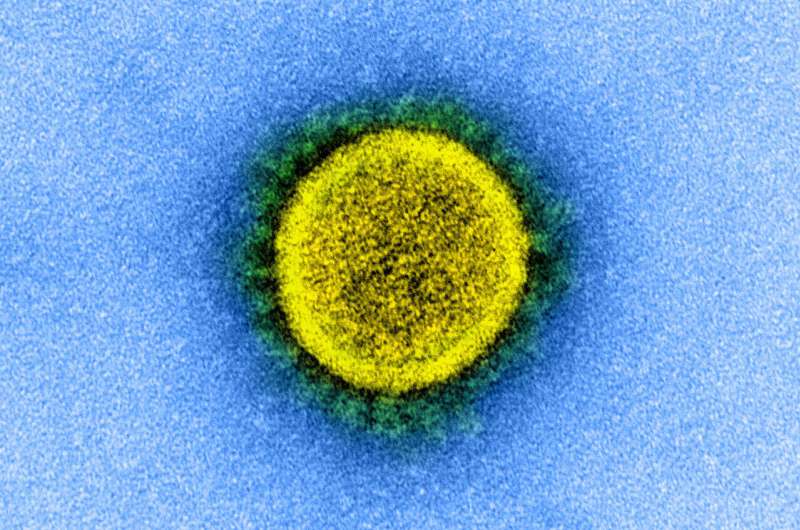SARS-CoV-2 (shown here in an electron microscopy image). Credit: National Institute of Allergy and Infectious Diseases, NIH
A study from Ann & Robert H. Lurie Children's Hospital of Chicago discovered that children younger than 5 years with mild to moderate COVID-19 have much higher levels of genetic material for the virus in the nose compared to older children and adults.
Findings, published in JAMA Pediatrics, point to the possibility that the youngest children transmit the virus as much as other age groups. The ability of younger children to spread COVID-19 may have been under-recognized given the rapid and sustained closure of schools and daycare during the pandemic.
"We found that children under 5 with COVID-19 have a higher viral load than older children and adults, which may suggest greater transmission, as we see with respiratory syncytial virus, also known as RSV," says lead author Taylor Heald-Sargent, MD, Ph.D., pediatric infectious diseases specialist at Lurie Children's and Assistant Professor of Pediatrics at Northwestern University Feinberg School of Medicine. "This has important public health implications, especially during discussions on the safety of reopening schools and daycare."
Dr. Heald-Sargent and colleagues analyzed 145 cases of mild to moderate COVID-19 illness within the first week of symptom onset. They compared the viral load in three age groups—children younger than 5 years, children 5-17 years and adults 18-65 years.
"Our study was not designed to prove that younger children spread COVID-19 as much as adults, but it is a possibility," says Dr. Heald-Sargent. "We need to take that into account in efforts to reduce transmission as we continue to learn more about this virus."
More information: JAMA Pediatrics (2020). DOI: 10.1001/jamapediatrics.2020.3651
Journal information: JAMA Pediatrics
























